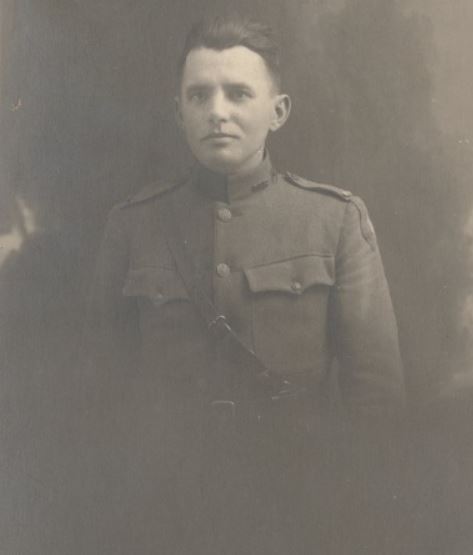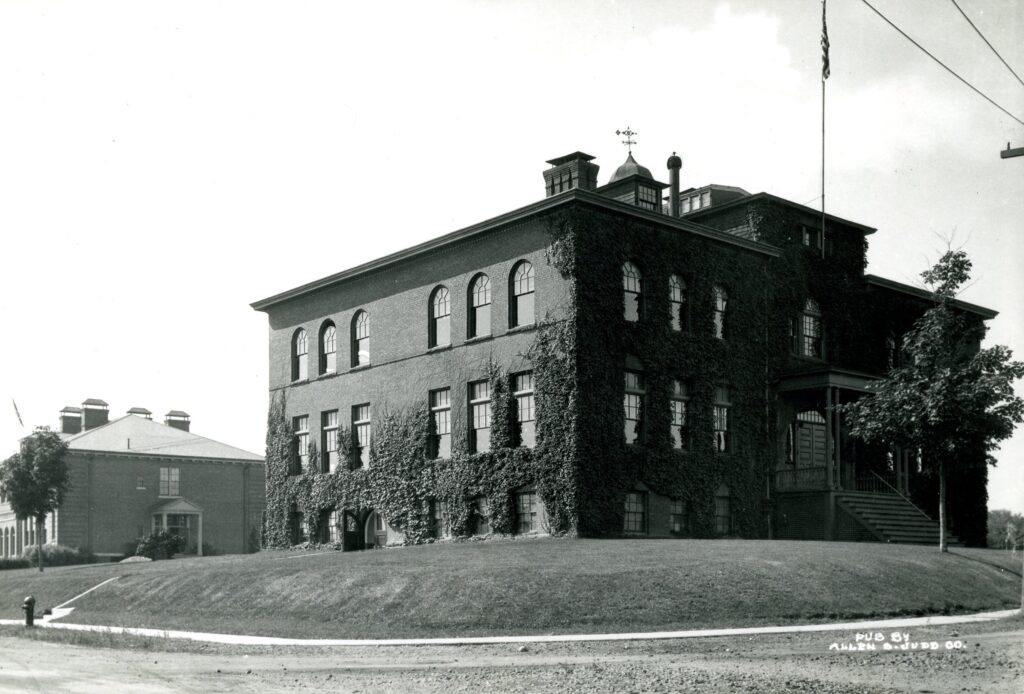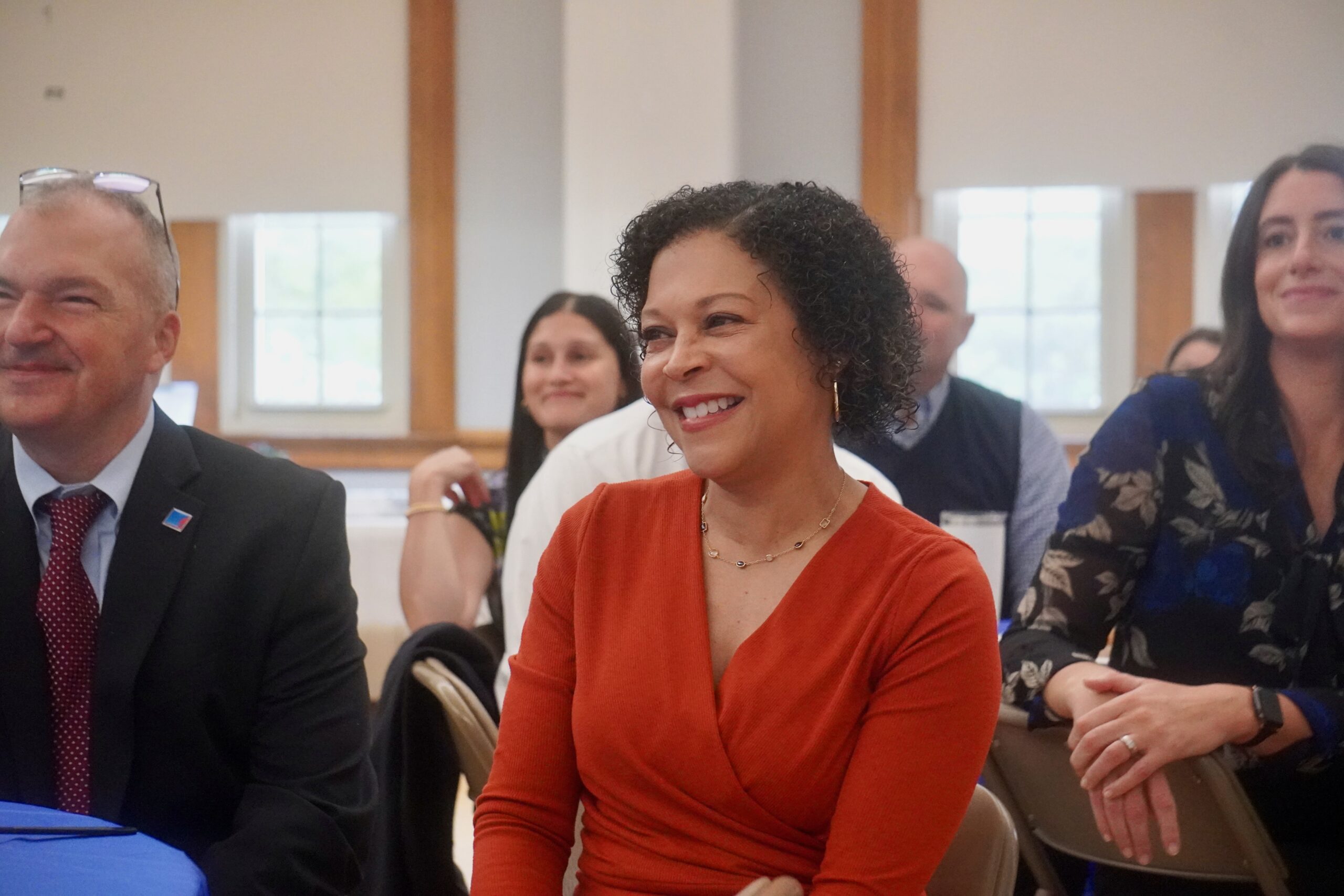From the West Hartford Archives: West Hartford High School Class of 1903

Audio By Carbonatix

West Hartford High School Class of 1903. Photo courtesy of Noah Webster House & West Hartford Historical Society
Historian Jeff Murray takes a look into West Hartford’s past to uncover some surprising information, stir up some memories, or reflect on how much life has changed – or hasn’t changed at all. Enjoy this week’s ‘From West Hartford’s Archives’ …
By Jeff Murray
On June 22, 1903, the West Hartford High School held its graduation with a class of just nine students, which was the largest class in the history of the town up to that point. The photo above is of the class (and its principal) standing on the steps of the high school, which stood at the corner of Memorial Road and Raymond Road.
I thought it would be a good idea to go into detail on the students from this class, especially in light of recent graduations at our high schools. Some students remain unidentified for now.
Leading the school as principal was John H. Peck (fourth from left in the back). Born in Norwich in 1838, he first taught in a neighboring town (apparently starting at the age of 16) and then graduated from Yale in 1863. He became the principal of a school in Portland before going to New Britain, where he remained for 30 years until 1897 when he was hired in West Hartford. Although he hadn’t lived in West Hartford before, his sister did – in fact, his sister Jennie married James C. Pratt, who owned a homestead and large farm at the corner of Farmington Avenue and Walbridge Road at the turn of the century.
Pratt was an officer in the Civil War, but actually served in the Confederacy, which is surprising considering his upbringing in Hartford. He had moved to Louisiana to live with his uncle when he was a boy and enlisted in the 8th Louisiana Infantry when the war broke out. He was taken prisoner by Union soldiers and sent to prison until 1864 when he was paroled in Connecticut. While on parole here, he met Jennie Peck of Norwich at a wedding of relatives they both knew.
When John Peck became principal of the school in 1897, his sister had been married almost 35 years, so there was already an established personal connection to this town. He gave talks on astronomy with his telescope every Friday afternoon; hosted debates and sleigh rides; and oversaw the ceremonial program for the 100th anniversary of George Washington’s death. He resigned at the end of the school year in 1906 and died of blood poisoning in the spring of 1911.
For now, all of the girls in the photo remain unidentified, but we know who the graduates were. Perhaps one day they will all be matched up. The first was Helen Alida Sears. The daughter of a Newington Road family (they legitimately owned all of Newington Road from New Britain Avenue to the town line), Helen was salutatorian of the class and served in a number of offices in Elmwood, including that of the Literary Club and the Elmwood Bible School. When her father sold off most of the farm in 1911 and moved to Oregon, she went along with him. She lived with her parents for decades after (her mother lived to be 108 years old!) and remained unmarried until her marriage in her 50s in the summer of 1936. The couple did not have children of their own and Helen died in 1975, survived by two sisters and stepchildren.
Second in the 1903 class was Mary Evaline McKenney. Her family lived in Farmington while she went to high school and stayed there when she graduated from the New Britain Normal School to become a teacher. She taught in the 1910s at the East School (at Whiting Lane) and was active in the alumni association. She also taught at the Center School until 1938 when she resigned to re-marry. She moved to Vermont to be with her second husband and stayed there until her death in 97 in the summer of 1982. She, too, was survived by stepchildren.
Seen third from right was Harold Milton Reed, who lived in an old house at the corner of Albany Avenue and Mountain Road. His graduation essay was on labor-saving machinery, which reflected the growing influence of automation, industrialization, and the role of labor itself in the workplace, all ideas that were prominent in the news of the day. Before the war, he was very active as pianist of the West Hartford Glee Club and was full-time organist at St. James’s Church. He was also involved in bowling and pool leagues in the 1910s. Reed served in the Connecticut National Guard and was called out in 1917. After the war, he worked his way up the ladder in corporate Hartford, starting as a bank clerk in 1920 and ending as assistant cashier at Connecticut Bank & Trust when he retired in 1952. He died suddenly in 1957 in Chicago enroute to a religious conference and left behind two sons.

Portrait of Harold Milton Reed, c. 1917
Fourth in the class was Albacinda Jane Pine, one of two black graduates in 1903. Her father, James W. Pine, helped organize the Sherman Guards, a black troop during the Civil War and came to West Hartford around 1872. He was very present in the affairs of the town – Pine was substitute preacher, mail carrier in the north end in the 1890s, and sexton and gravedigger at the cemeteries. He and his son George were prominent poets as well. That seems fitting – she was the class poet in 1903. A few years after Albacinda graduated from the high school, her father had a house built on Fern Street near the corner of Arundel Avenue. Albacinda lived with her mother and siblings in the house until her early death in January 1909. According to her obituary, “she had been in ill health for several months.” The rest of her family moved outside of town after her and her father’s deaths. Her mother’s estate owned the house on Fern Street until the early 1930s when the town took over the property for unpaid taxes and sold it at auction to a developer, who built the current stretch of houses along the south side of the road west of Arundel Ave in the 1930s.
Fifth in the class was Olive Burr Fulton. The daughter of Charles W. Fulton and Isabelle Tait, a Canadian immigrant, Olive lived on the family estate on North Main Street near Asylum Avenue for many years. Charles managed a tobacco farm in this section since the late 1880s and Isabelle was involved in many community clubs and events in the vicinity. When the school buildings were reorganized (and smaller schools were removed to further consolidation), Charles was hired to drive the “bus” for the students. I think about the “privacy” that students feel on a school bus, so I wonder if it would have been awkward for Olive to have her dad drive her and the other kids to school every day. When he died in 1912, his obituary said, “He will probably be missed as much by the children as by others, as he has driven the school bus for about fifteen years.”
After her graduation, Olive moved to New Britain, where she worked as a bookkeeper for a factory and then plumbing supply office. In the 1920s, she came back to town with her mother and found a job with the State Highway Department, where she worked from 1937 until her retirement in 1950. She lived with her sister and brother-in-law Henry Kottenhoff, a well-known druggist in the Center. She was unmarried and died in 1952 at the age of 66, found by passersby in her car parked in the Center.
Second from left in this photo is Frank Elliott Barber. The Barber family owned a significant amount of land at the corner of North Main Street and Still Road since the 1860s when his grandfather George had bought the farm. When his grandfather died in 1892, the land on both sides of North Main Street was divided among the children. This would impact the layout and development of this section of West Hartford for decades to come. His graduation oration focused on labor unions and guilds and on “the rise of united action among those employed.” Similar to Harold Reed’s essay, labor and industrialization were such predominant topics during the time that even students from old family farms on the fringes of West Hartford focused on its impact. After graduation, he completed a course at Morse Business College and entered Aetna Life Insurance Company as an underwriter in 1904. He was made a department head before 1920 and then assistant secretary in the accident and liability department. He was finally made secretary of the department, where he remained until his retirement in 1946. He married a Hartford cashier and accountant, Jessie Duncan, and they lived on Staples Place in West Hartford until the 1970s when Jessie died and he moved to Maine, where he lived until 1980.
Harriet Mabel Rose was the seventh student in the class of 1903 and was the other black graduate. Her father, Thomas Harrison Rose, was born in Virginia in 1850, a state where one-third of the population was enslaved on the eve of the Civil War. He came to Hartford after the war and married Martha Ten Eyck of New Jersey. Rose was employed in West Hartford as coachman for one of the wealthy families that lived in the Prospect Avenue neighborhood. They rented a flat in a combination brick house and barn/stable on the east side of Concord Street when Harriet attended the West Hartford High School with her younger sister Bertha.
After graduation, Harriet married Louis H. Johnston and had two children, Eleanor and Marion. They lived in the north end of Hartford and she worked as a cook for a club in the city. She was involved in the activities of the Talcott Street Congregational Church and served as clerk and treasurer of the church in the 1940s. She died in the summer of 1953 in a house that is just an empty lot today. Her living descendants settled on the West Coast.

Corner of Raymond Road and Memorial Road (c. 1950s), the same high school building seen in the 1903 photo
Photo courtesy of Noah Webster House & West Hartford Historical Society
We reach the last two graduates of the class of 1903. Florence Barnes Cruttenden was the daughter of Robert S. and Edna Cruttenden. Her parents were some of the original lot owners in the Boulevard tract. Robert was employed as an accountant at the National Fire Insurance Company and served as vice president of the Congregational Church’s Men’s Union and treasurer of the Ecclesiastical Society here. He was also president of the town council until 1933. After she graduated, Florence attended Mt. Holyoke and then graduated from the New Britain Normal School in 1907. She studied for a winter at Columbia University and helped form a young women’s class in religious pedagogy, being elected as its president.
In West Hartford, she was instrumental in the communal activities of Camp Fire Girls of America and the Young Ladies’ Monday Evening Club. After she came back from Columbia, she bought a house on North Main Street and taught at schools in the area, including in New Britain. In the 1920s, she moved to Salem, Massachusetts, where she stayed for the rest of her life. She was an instructor in history and social science. She focused on the history of the countries in the American continents with “an emphasis on the indigenous peoples; history of Europe; sociology; and economics.” She was never married and died in 1973.
The ninth and last graduate, Harriet Louisa Decker, grew up in a house on Pleasant Street. Her parents were some of the first owners of land on the road after it was laid out in the 1890s. Her father Warren was a blacksmith and horseshoer, and he was the oldest member and past master of Wyllys Lodge when he died in the 1940s. Harriet Decker was hired a few years after her graduation by Myron J. Burnham as a bookkeeper for his grocery store on South Main Street.
The store was still in its early years, so she would have been only one of a few employees. By the 1920s, nearly a dozen girls worked in the offices of M. J. Burnham’s store. After a short stint there, Decker got a job at Travelers Insurance Company for a few years until she married a man from New York on Valentine’s Day 1912 and left town. After his death in 1927, she moved back in with her parents, this time in upstate New York. Her father’s obituary in 1943 does not list her as a surviving child, so until further information is found, she remains unaccounted for after 1930. She is a reminder of the gaps we have of the ones who lived here.
Identifying these students is not just interesting; it helps round out their stories and keeps their memories alive. It also shows that understanding local history is a continuous work in progress and that a look into a single photograph from 121 years ago can tell us a lot about what was important back then and what we can appreciate about the futures of our graduates today.
Jeff Murray was born and raised in West Hartford and has been involved with the Noah Webster House & West Hartford Historical Society since 2011 when he was a high school student and won the Meyer Prize for his essay on local history. Jeff routinely volunteers as local history researcher uncovering information for numerous museum programs such as the West Hartford House Tour and West Hartford Hauntings. Jeff works as a data analyst at Pratt & Whitney.
Like what you see here? Click here to subscribe to We-Ha’s newsletter so you’ll always be in the know about what’s happening in West Hartford! Click the blue button below to become a supporter of We-Ha.com and our efforts to continue producing quality journalism.




I did some ancient research. Harriet aka Hattie married Elmer Snyder and her parents and Hattie/Elmer all moved to North East, N Y . This is a town North of Danbury . Elmer was a farm laborer and died in 1925 . Hattie Snyder married George E. Hardcastle on 07 April 1934 . Hattie Hardcastle died on 07 January 1936 in North East. George died in 1952 . Love your work.